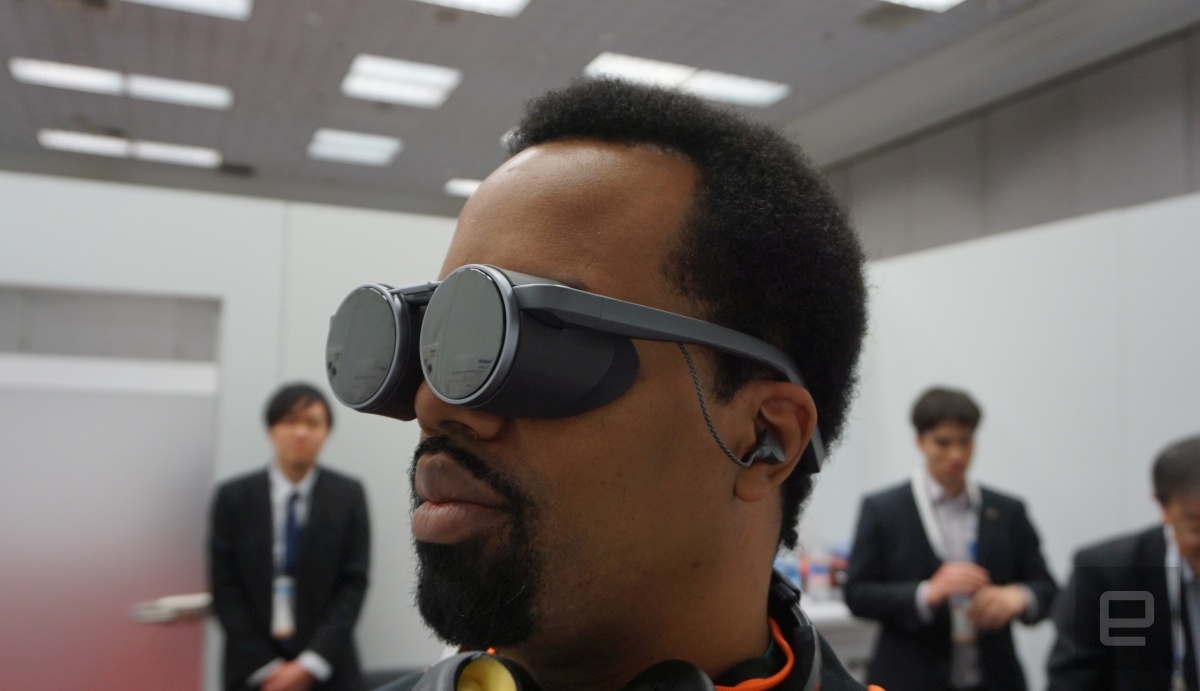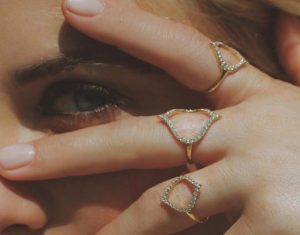Another part of the demo showed a CG recreation of a temple in Japan, including areas where visitors aren’t allowed to go. The high quality of the scans used to create the temple combined with the goggles to make one of the more real-feeling virtual experiences I’ve ever had. That came despite the glasses’ small micro OLED viewing windows.
It was also a very comfortable experience thanks to swappable prescription lenses — while I haven’t had many issues with VR headsets, as a glasses wearer I’m still skeptical. It just happened that the last person to try them had a very similar prescription and I could see clearly as soon as I put them on.
The glasses certainly look a bit more fashionable than most VR gear, and don’t rely on a band or anything to hold them on. While Panasonic and its partner the Kopin Corporation expect to make a version available for commercial use next year, the working prototype I tried out was tethered to a computer powered by an RTX 2080 GPU. They were also still front-heavy enough that they might get uncomfortable with extended use, although the non-working prototype that showed what they’re planning to build was much lighter.
Follow all the latest news from CES 2020 here!
All products recommended by Engadget are selected by our editorial team, independent of our parent company. Some of our stories include affiliate links. If you buy something through one of these links, we may earn an affiliate commission.

Comments







